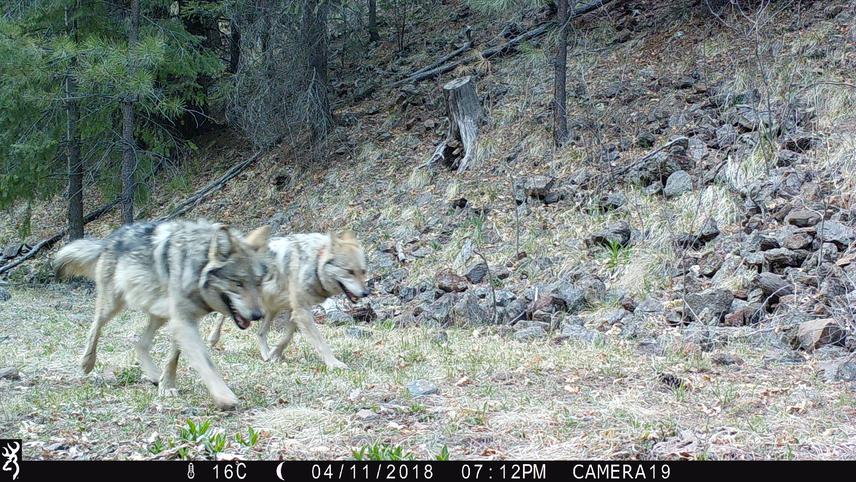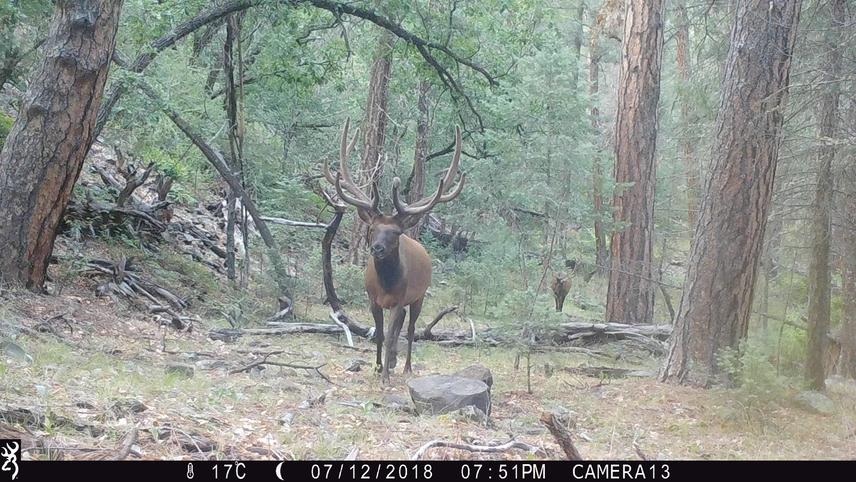Alejandro Gonzalez-Bernal
Availability of wild prey for the Mexican wolf is a crucial piece of information to improve management, decrease social conflicts and to set science-based conservation goals. I will conduct the first assessment of prey abundance across the historical distribution of the Mexican wolf (Canis lupus baileyi), using camera trap surveys. The most important question that will be addressed is: how many wolves can inhabit in Mexico. Our project aims are 1) to provide the first estimation of ecological carrying capacity for Mexican wolves; 2) to elaborate the first range-wide map of ungulate density across the remaining suitable habitat of the Mexican wolf; 3) Identify areas of possible conflict between wolves and ranchers and 4) to interact with local ranchers and private owners to consolidate a group to start implementing conservation and management actions of wild prey to promote human-carnivore coexistence.

Mexican wolf - Canis lupus baileyi. ©UNAM-PAPIITI.
The wolf in North America is one of the most iconic species and despite of its ecological importance is one of the most threatened. After an eradication campaign, its former distribution was severely reduced in both the U.S. and Mexico; populations were extirpated to the point of nearly extinction and remaining individuals survived in captivity or in remote areas in Canada. In North America, there are five subspecies recognized and the Mexican gray wolf, (Canis lupus baileyi) is the smallest of all. This subspecies is considered endangered and is listed by the Endangered Species Act in the United States and in Mexico by the NOM-059. Historically, the Mexican gray wolf lived in the arid areas and temperate forests of southwestern U.S. and northern Mexico preferring areas with high ungulate biomass. Reintroduction of the Mexican wolf recently began in Mexico and identification of release areas is crucial for its recovery. An analysis indicated that suitable habitat is still present in Mexico but estimates of prey density are missing in many of those areas, which can be used to estimate the Ecological Carrying Capacity for this carnivore, a critical piece of information for the success of the project and which can impact both ecological and social aspects of the project.

Elk - Cervus canadensis. ©UNAM-PAPIITI.
In this study an assessment of prey abundance will be performed across the remnant habitat throughout the historical distribution of this extremely endangered subspecies using camera trap surveys. Our study sites are located along the Sierra Madre Occidental (SMOcc), which represents the largest mountain chain in Mexico and the one with the highest probability of connecting, through biological corridors, the released Mexican wolves in Mexico with the population established in the Arizona-New Mexico Mountains. We will survey at least 3 sites across the Sierra Madre Occidental focusing on the high quality areas previously identified. In addition, we will conduct an analysis to develop a risk map of Human-Carnivore Conflict using Occupancy and Ecological Niche Models. Finally, through participatory workshops we will interact with farmers and private owners to begin implementing conservation and management actions of wild prey to promote Human-Carnivore Coexistence.